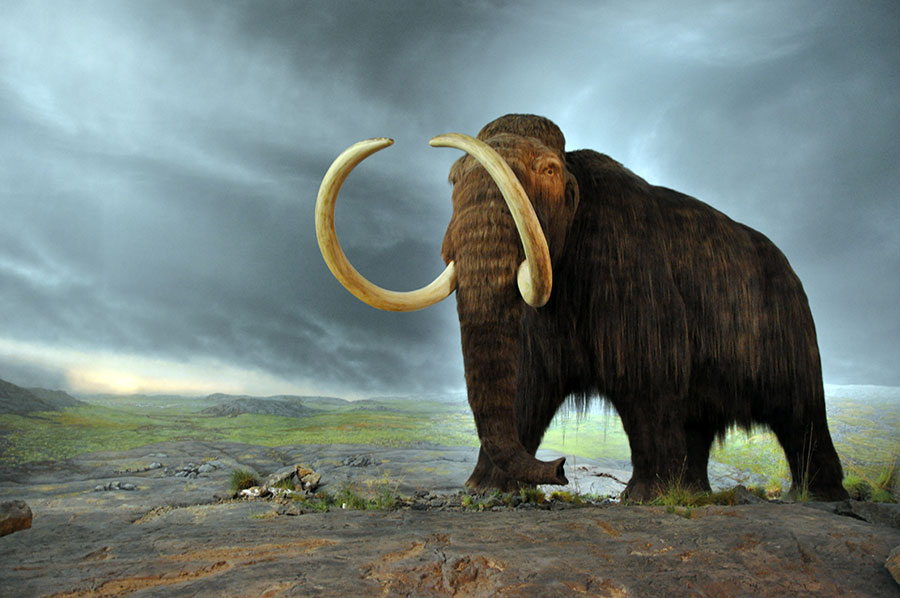The Story of NIFFY
When NIF was being planned and built, we got a big surprise. In 1997, while removing 210,000 cubic yards of earth—enough to fill 2½ Olympic-size swimming pools—for utility trenches at the site, we discovered the oldest known Livermore Valley resident: a prehistoric elephant called a mammoth.
We assembled a team of experts. Archeologist Dr. Roger Kelly from the Department of the Interior and Scott Samuelson of the Department of Energy worked together with LLNL scientists to unearth this discovery.
Excavation of the bones required a soft, light touch by the archeologists so none of the delicate bones were damaged. Fortunately, they were buried in soft moist sand, which made the digging easier. Small red flags were used to mark bones as they were discovered so they wouldn’t be stepped on or damaged. A special solution was applied to seal cracks and harden the bones when the sand was removed.
Two weeks after the first discovery, exploratory excavation paid off when another bone cluster was found: an almost complete humerus bone, which runs from the shoulder to the elbow.
Return visits to the excavation site would not be possible after NIF was built, so scientists carefully collected soil samples, drew maps, took photos and thoroughly documented the diggings.
A fossil wrap made of tissue paper and water was applied prior to a “capping” mixture of plaster, water, and burlap that created a protective container for the bones. When the top cap was dry, the bones were carefully rolled over to cap the bottom side. Then the bones could be safely moved.
During excavation, construction continued on NIF to stay on schedule, so there was a 150-foot crane at the site to lift the capped and labeled bones onto trucks for removal.
At the University of California at Berkeley, scientists conducted research and formally cataloged the find. Through carbon-14 dating it was determined the bones were 16,000 years old!
A contest among local school children was held to determine a nickname for the mammoth. Samantha Boyd, then a second grader at the Croce School in Livermore, came up with the winner: Nifalupakus or “Niffy.” The mammoth bones became a part of the permanent collection at the UC Museum of Paleontology in Berkeley, CA.




